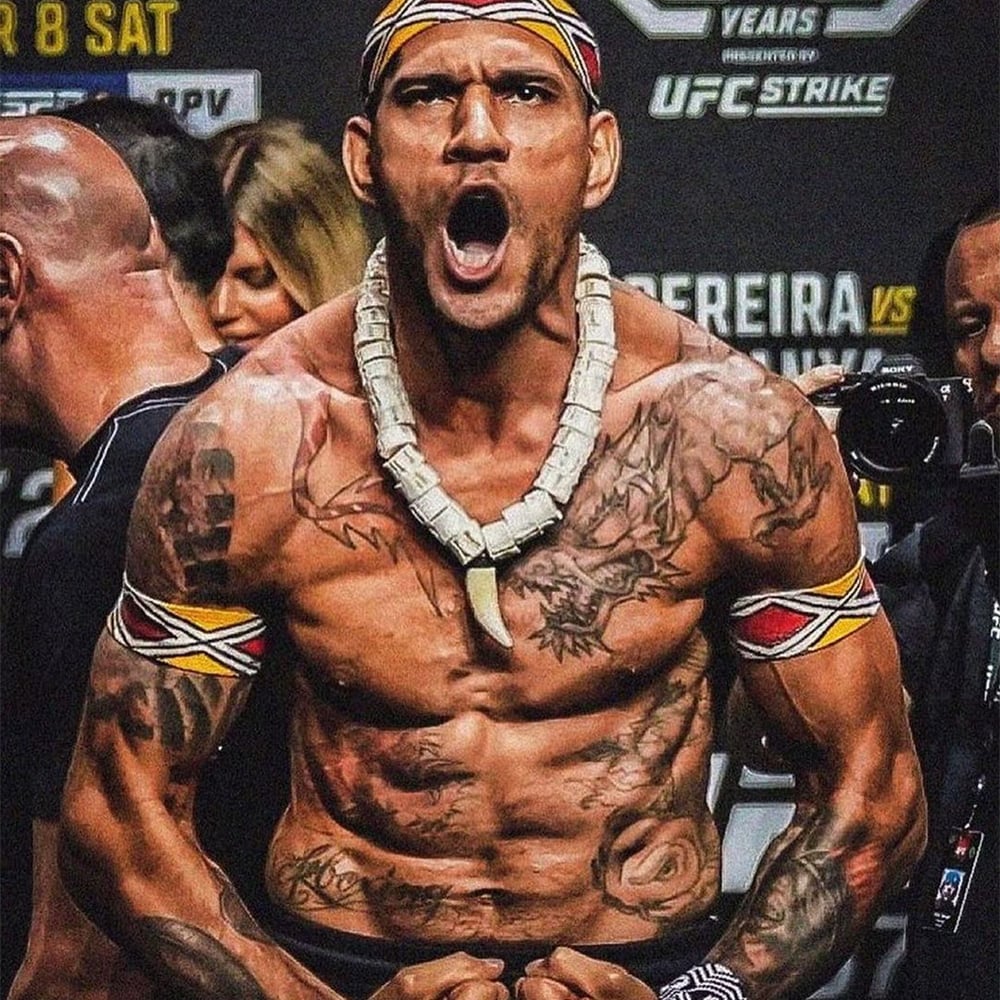
Issue 211
September 2024
Weight cutting has always been controversial yet integral to MMA. Fighters undergo extreme measures to shed pounds rapidly in the days leading up to a bout, to squeeze out the tiniest advantage come fight night. Fighters Only’s Paul Browne spoke with Dr. John Connor of the Irish Strength Institute, who has a PhD in the topic, about how the process has changed over the years for the better.

HAS THE SCIENCE OF WEIGHT-CUTTING EVOLVED?
You can do all the tough training in the world, but if you screw up the weight cut, you screw up the fight. Back in 2008, when I first began working with fighters, there was very little accessible research on the topic of weight cutting for MMA. There was some stuff from other sports like wrestling and rowing, but a lot of what was doing the rounds back then was effectively bro science. Compared to where we began, the difference in what we do now and how we manage and measure the weight-cutting process is incredible. I can remember doing a weight cut back in the old days with a fighter, and he spent almost six hours in the sauna, which is ridiculous looking back. But even now, that’s probably seen as acceptable by some coaches, which blows my mind. It’s crazy how far we’ve come.
WHAT ARE THE RECENT NEW PRACTICES?
What we do now compared to ten or fifteen years ago, a lot of the broad strokes would be very similar, but it’s the details that are different. So just take, for example, the hot baths. We use thermometers in hot baths now, whereas before, the approach was to simply make the water as hot as possible and get in. Now, it needs to start at 38 degrees. You can bring it up to 40 degrees, and you only need to stay in there for a certain period of time and then spend a certain period of time out of the water. Before, we measured it by asking, ‘How do you feel?’ It was basically fumbling around in the dark. People are still using saunas to cut weight, just as they did back then, but we know a lot more now about when to start using them. We know that we need to narrow the weight-cutting window as opposed to jumping into a sauna on Wednesday morning to begin cutting water for a Friday weigh-in. The window of active dehydration needs to be as small as possible. A few years ago, it was common for fighters to starve themselves for a few days when they were trying to cut weight, but we know better than that now. Yes, we still use saunas, still cut out food, still use hot baths, but how the whole process is structured has really changed. It’s a lot more measured and specific to the athlete these days.
WHAT ARE SOME OF THE COMMON MISTAKES YOU USED TO SEE?
I remember (former UFC fighter) Paddy Holohan telling a story about how he approached the water loading process based off information he got from his team-mate Cathal Pendred. But water loading is based off your weight. Paddy was a flyweight, and Cathal was as big a welterweight as you’re ever likely to see. So, Paddy was chugging down 10 liters of water the week before a fight, but water loading, and weight cutting are not a one-size-fits-all process.

I think the biggest thing that changed over the years is the shift away from suffering for the sake of it, in the sense that everybody used to think, ‘the harder the weight cut is, the better.’ Weight cutting is difficult, and it always will be, but nowadays, we try to reduce the difficulty and minimize the window of suffering as much as we can. We are a lot more measured, calculated, and precise nowadays than we were 10-15 years ago.
IS THERE A DIFFERENCE BETWEEN DIET AND WEIGHT CUTTING?
Everybody can cut a certain amount of weight regardless of their weight class, but we always ask the question: where do you sit on the bell curve? Are you right in the middle? The amount you can cut safely varies depending on that. Most athletes can cut 8-10%. And when I say weight cut, what I mean is, how much can you lose from your starting point on Saturday to your weigh-in day the following Friday? That’s your weight cut. Anything before that Saturday is classified as your diet, your weight loss process. Some people begin weight-cutting too soon, but I consider ‘Saturday to Friday’ your official weight-cut window. I remember (former UFC welterweight champion) Johnny Hendricks talking about cutting 50lbs in the lead-up to his fights. You didn’t cut 50lbs, buddy. You were just overweight and had to lose it all during your camp. He probably started at 220lbs, dieted to around 190lbs, and then began his weight cut from there, going on to make the 170lb limit.
WHAT WOULD BE THE MAIN WEIGHT-CUTTING MISTAKE YOU SEE FIGHTERS MAKING THESE DAYS?
A big mistake people make is seeing what other people cut and attempting to do the same. With any physical attribute, there’s always variables. Most people can cut 8-10% with no negative effects on performance. Some people can only manage 6%, and some can probably do 13-14%. Alex Pereira, for example, cuts an insane amount of weight, but younger fighters shouldn’t try to mimic what he does. He’s an absolute outlier, and the average fighter can’t cut that much weight without screwing up their performance, so you need to aim for what the average fighter does, not the Alex Pereira’s of this world. It’s like watching Usain Bolt sprinting and thinking, ‘I need to be like that.’ Most people make the mistake of thinking they can do something that’s beyond them.

ARE THERE ANY OTHER GLARING ERRORS YOU SEE FIGHTERS MAKE?
The big mistake I see people making is missing weight because they’re too fat at the start of their camp. When I talk about starting your cut on that Saturday before the weigh-in, we need you to be in good physical health at that point. Ideally, eating maintenance calories for a couple of weeks leading up to it and fully hydrated and eating carbohydrates. The reason being that once we start the cut, the first easy steps are cutting out your glycogen stores and then the fiber. Carbs are stored in your body as glycogen, and for every gram of glycogen you store in your body it’s 3 grams of water you’re holding. That can be quite easy to get rid of when we begin the cut. Also, if you follow a healthy diet that has plenty of fiber in it, cutting fiber out for a few days can shave off a couple more pounds, which is an easy fix. Only after that do you begin getting rid of the water in your system, and that brings risk. So, if you can lose 3-4% before taking that risk or potentially harming yourself at all, then to get rid of the next 5-6% from water becomes a much easier process. The big problem is fighters often enter camp overweight and out of shape, so they arrive at the Saturday before the weight cut in a depleted state. They’ve had to follow an extremely restrictive diet. Their energy is low as a result. They’re probably on a low carbohydrate diet to get to that point, which means when the cut begins, there’s less carbs to come out of their system. So, the two biggest mistakes are probably trying to cut more than they actually can and being too fat coming into camp. The camp becomes more about weight loss than it does about preparing for a fight. Weight cutting is part of fighting, but if you screw up your diet for weeks on end, then that has a knock-on effect on your weight cut, and all of that can negatively affect how you perform on fight night.
WHAT ASPECTS OF A FIGHTER’S PERFORMANCE SUFFER WHEN THEY CUT WEIGHT INCORRECTLY?
In some of the studies I’ve conducted over the years we’ve found that your least affected attribute from weight cutting is strength, and the most affected one is endurance. So, sometimes, fighters can get away with having a tough weight cut. They can pick up a knockout or a submission in the opening round or two, but that third round can become a problem if it goes that far. If you have to go into championship rounds and you’ve made a mess of your weight cut, you can find yourself in real trouble.
IF YOU’RE TRAVELLING WITH A FIGHTER WHAT ARE THE MOST IMPORTANT THINGS ON YOUR CHECKLIST?
The number one priority is having an accurate, reliable weighing scale. How many times do you hear a fighter, or a coach complain, ‘The scale was wrong!’ This can happen, but you always need to have your travel scale, which you can compare to the official event scale so that you don’t screw up your weight cut and won’t get caught out at the last second by a silly mistake. You also need to be prepared for the ‘active dehydration’ part of the cut. Figure out in advance if you’ll be using a sauna, a hot bath, or a sauna blanket. What’s available to you? I have a sauna blanket in my gym that I’ll lend to fighters if they’re traveling without me, so they have it as a backup. You need to find out in advance if your hotel room has a bath, if the hotel gym has a sauna and if so, what type of sauna is it? When is it available for use? You don’t want to turn up at the sauna at 6 am on the morning of the weigh-in and find out that they don’t turn it on until 7 pm because it rarely gets used. The third thing on my checklist would be telling the fighter to bring as much of their own food as possible with them, maybe for the post weigh-in—rehydration solutions, protein powders, etc. You want to stick to using the things your body is used to and not get caught out.
WHAT ARE YOUR PROTOCOLS AFTER THE WEIGH-IN?
Post-weigh-in, I always get my fighters to start with liquid carbohydrates, which you can pack in a powder form. Fluids and carbs are vital after you’ve weighed in. I give my fighters different calculations based off the weight they make, the weight they walk around at, and they need to have stuff prepared and ready beforehand. We stick to concentrated sugary foods after they’ve rehydrated, then some slower-release carbs (like rice cakes, for example). They won’t eat real food until later on after they’ve maybe had a nap to recover. So, a lot of that stuff they’ll have immediately after weighing in, they can bring that with them when they’re traveling, which takes the stress out of the situation. You don’t want to land in a foreign country and have to spend hours searching in shops for the things you need to replenish after your weigh-in.
WHAT ADVICE CAN YOU SHARE WITH FIGHTERS WHO ARE NEW TO THIS PROCESS?
People are fascinated by all of the crazy things that go on during fight week all of the drama. But the main advice I would give to fighters is that the lead-up to fight week is massively important and if you plan and prepare in advance, then the weight cut itself becomes so much less stressful. The leaner you are (while maintaining muscle mass), the easier it is to make weight. Professionalism pays off. Anybody can kill themselves making weight, but did you behave like a professional throughout the year, or did you gamble on an extremely risky, extreme diet for the final three weeks? Some fighters might get away with that and still perform but if you had to bet on it working for you, the odds wouldn’t be stacked in your favor. Depending on how well you cut weight, you should aim to diet down to a point where you can train really hard at just above maintenance calories, at around 10-13% above your weight class. If you can do that, the cut itself becomes so much easier, and there’s less negative impact on your performance.
You’ll often see fighters getting called up to the UFC at the last minute. And they end up not performing to the best of their abilities because they had to cut too much weight in a short space of time. They have to do an extreme diet followed by a crazy weight cut. But if you’re walking around at 10-13% above your weight class and you get the call 2-3 weeks out to fight in the UFC, you could absolutely make that weight. There’s nothing wrong with having a blowout for a week or two after you fight, but you have to get back on it quickly rather than waiting until the next fight is announced. That’s the type of behavior that stifles an athlete’s potential in the long run.
WINNING THE LONG GAME
In the high-stakes world of MMA, proper preparation and weight management are far more than just steps to make weight—they are essential pillars of a fighter's overall success and longevity. From optimizing performance to reducing injury risks, how fighters manage their bodies in the lead-up to a fight can define their career trajectory. In a sport where every advantage counts, those who prioritize their weight management as part of a holistic approach to training are not just preparing for their next bout—they're preparing for a lasting career.










